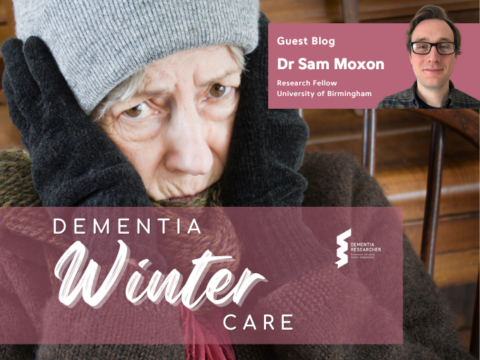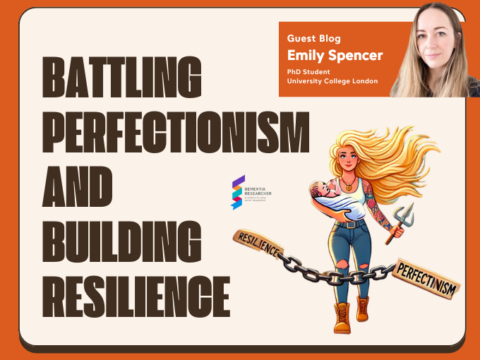If we ignore that we are once again breaking records with high temperatures for the time of year (I had my washing out on the line to dry the other day and it’s the beginning of November, and I live in Scotland.. (Ed. Yes… we know it’s January now, but sometimes there is a lag between receiving a blog and publishing it), you may have noticed that it’s starting to get cooler again. And what that means, for me, is that it’s time to get the quilts out.
If you’ve read some of my blogs from several months ago, you’d know that I started quilting after having a rough time of my PhD. In the time since, the quilting is out of control – I have a longarmer now that I regularly go to who helps me to quilt things, there are seven or eight finished quilts in our house of two (plus a cat), with three currently in progress. As someone who likes having items for a purpose, this love of quilting has been somewhat surprising to me; two people do not need 11 quilts, and yet, these two people are soon to have 11 quilts.
Another surprising aspect of my adventures in quilting has been how it has acted as a gateway to other textile arts; quilting led to batik, led to embroidery, led to rug making, led to weaving, led to knitting. Granted, I haven’t kept them all up (and knitting I’ve only just started) but considering that textile arts are one of the only things I do at the moment outside of work, the two are sometimes merging into one. Resources I use to learn more about quilting and knitting have also exposed me to endless heart-warming stories about how these textiles have helped people who are living with dementia and may have a therapeutic benefit.
Several years ago, my mum took me to an exhibit which launched the Alzheimer’s Scotland Action on Dementia Tartan and showcased lots of different prototypes created by people living with dementia. In the time since, I have seen a lot of people living with dementia experience stimulation of both memory and motor skills when being exposed to textile arts. This may be due to the familiarity of the patterns and techniques used – for example the ‘log cabin’ quilt block is very commonly used and became popular during the American Civil War, with quilts raising money for the troops. The basic block has been popular since but has taken different forms and adapted over time. This is also true of several other core quilting blocks, such as the snowball block, which has an extensive history in the Amish community and beyond.
The repetitive nature of these sort of crafts requires procedural memory, and for many people living with dementia, this remains for longer than other types of memory. The need for fine motor skills also helps to slow progression of motor-related decline. Indeed, I have heard several stories of people who have fairly advanced dementia but are still able to create beautiful knit pieces (all of which have made me cry many, many tears). This is something my own gran did in her dementia journey, and it was wonderful to see her still enjoy connecting with that part of her life, even if it looked a bit different to how it had previously. It provided a sense of purpose, identity, and continuity and a feeling of accomplishment. Added to the planning and problem solving that’s required – for example, if you are following a pattern, or trying to remember something you did years ago but are a bit rusty at – I strongly (although admittedly, anecdotally) feel as though crafting hobbies had huge benefits for her cognition as her dementia progressed.
Crafting with textiles is also a very tactile experience that can help with grounding and soothing, and the use of colour can provide visual stimulation and mood enhancement, again engaging different areas of the brain. Some facets of these crafts steer into that idea, for example ‘fidget quilts’, bright quilts with textured features and accessories such as beads, keys, pipe, pockets and ribbons, which add interest and give hands something to do, whilst also redirecting feelings of agitation. If you fancy making one of your own for your loved one living with dementia, there are abundant instructions online, and as long as things are securely attached, you’re pretty much good to go!
Additionally, the mindfulness that can come from textile crafting can help with anxiety and stress – this is exactly why I took up knitting just as the end of my fixed-term contract looms near, because it helps me to quieten my anxieties as my brain races with the panic around what I will do next and where future security will come from. All of this to say, don’t knock it til you’ve tried it, it’s powerful stuff!
These benefits are all fantastic, but one of the things I find best about textile arts, which lends itself well to various contexts people living with dementia may find themselves in, such as care homes, is the socialising that occurs. For some, these fabrics are at the core of their family history – for example, although it doesn’t originate from here, the paisley pattern has strong links with Paisley, near Glasgow, after which it is named (in English, at least). The history of this fabric is richly woven (pun intended) into the lives of many families who live less than 10 miles from where I sit writing this blog. Harris tweed is another example, made in the Outer Hebrides with skills passed down through generations. Fabrics are steeped in history, and they have an incredible capacity to ‘unlock’ long-forgotten memories that can be shared and passed down. Not to mention that social crafting is incredibly common and provides a space for support which also helps to improve connection and emotional wellbeing.
In a break from my often pessimistic blog posts, I hope this one has been a bit more of a positive read for you, despite the existential crisis that led to me picking up knitting in the first place. My partner read the draft and he referred to this post as being “full of heart” and I think it is exactly that – an ode to my gran, and to the joy, self-expression and connection that textile arts can bring.

Jodi Watt
Author
Dr Jodi Watt is a Postdoctoral Researcher at University of Glasgow. Jodi’s academic interests are in both healthy ageing and neurodegenerative diseases of older age, and they are currently working on drug repurposing for dementia. Previously they worked on understanding structural, metabolic and physiological brain changes with age, as measured using magnetic resonance imaging. As a queer and neurodiverse person, Jodi is also incredibly interested in improving diversity and inclusion practices both within and outside of the academic context.

 Print This Post
Print This Post





